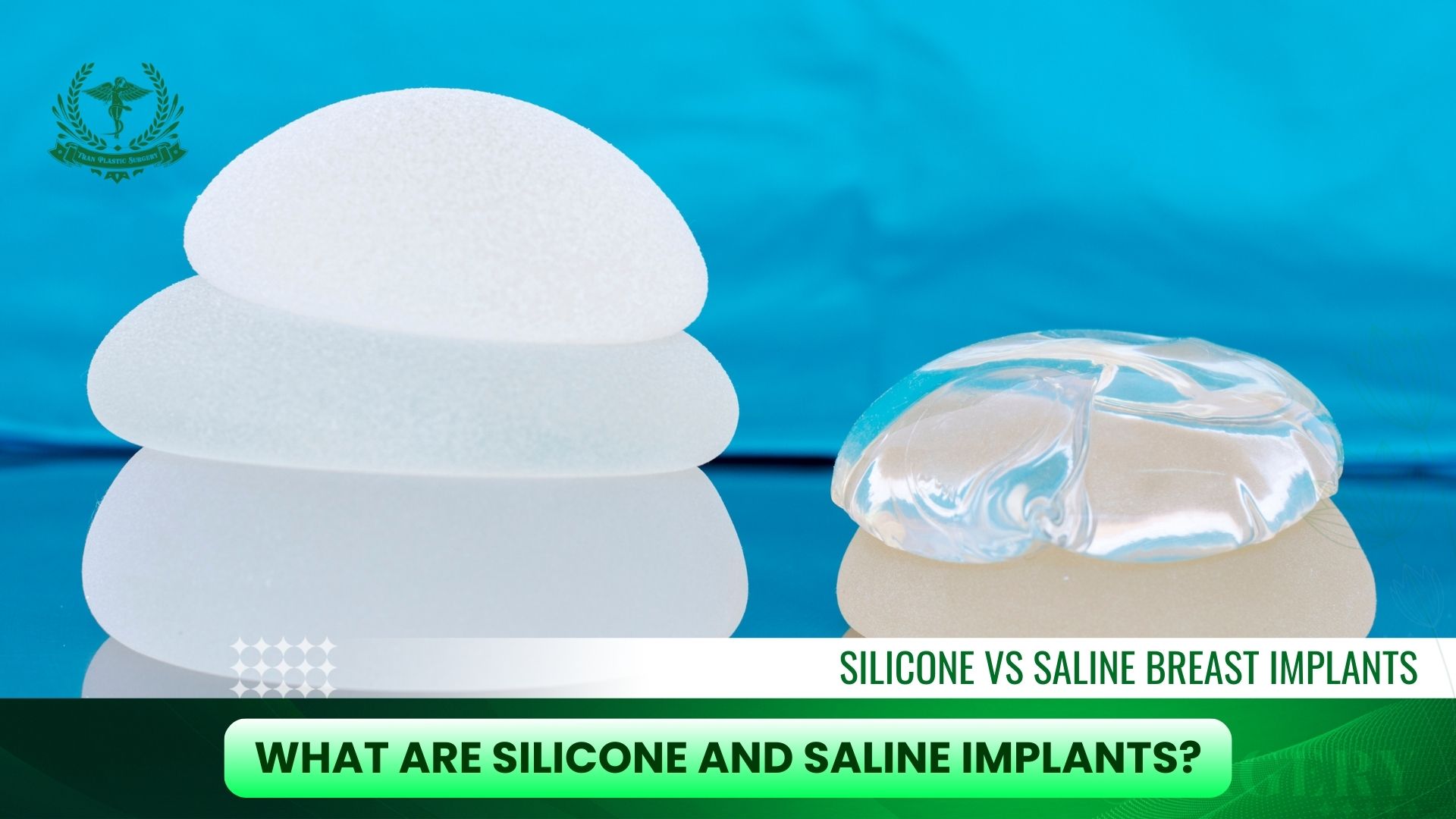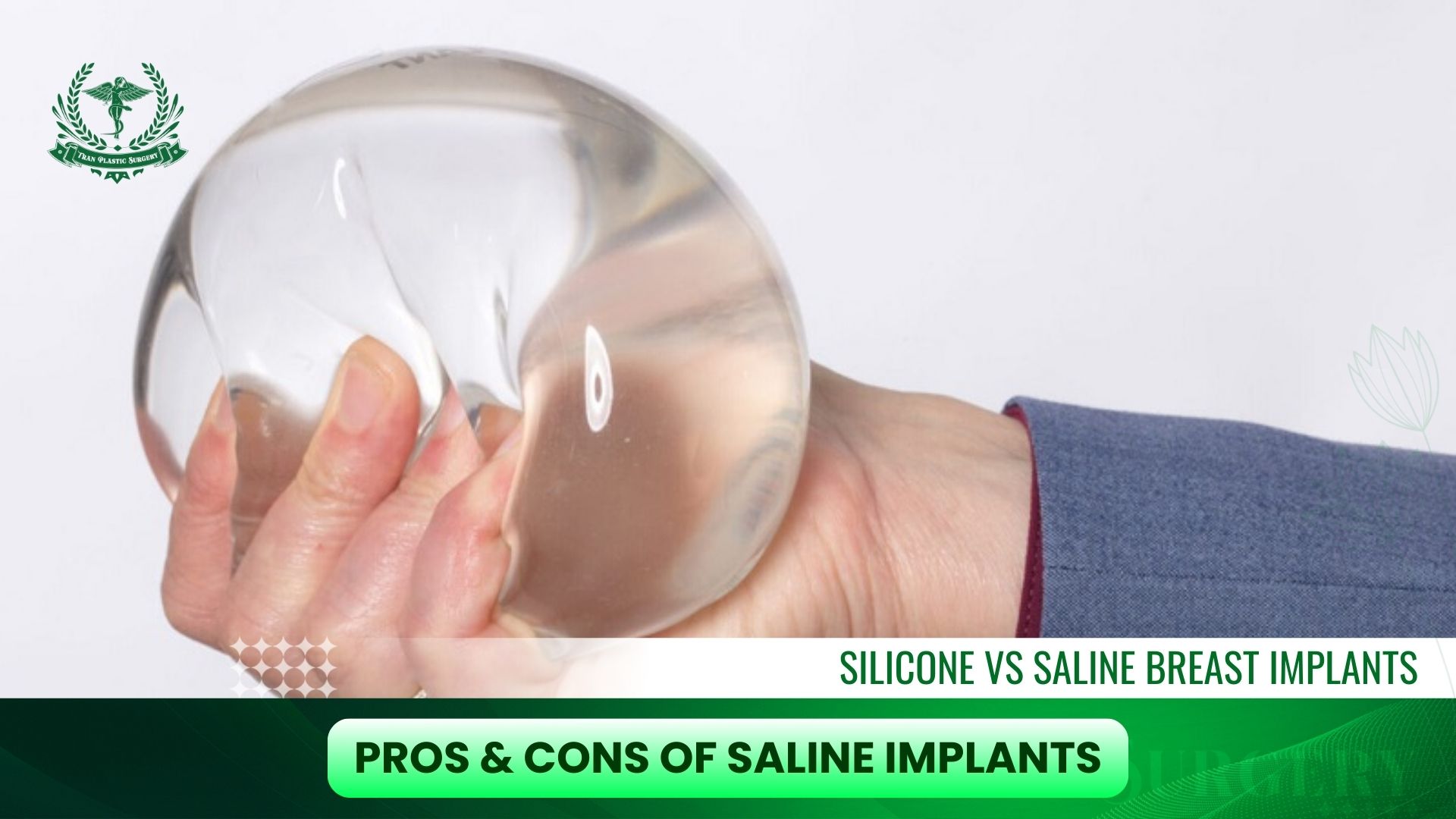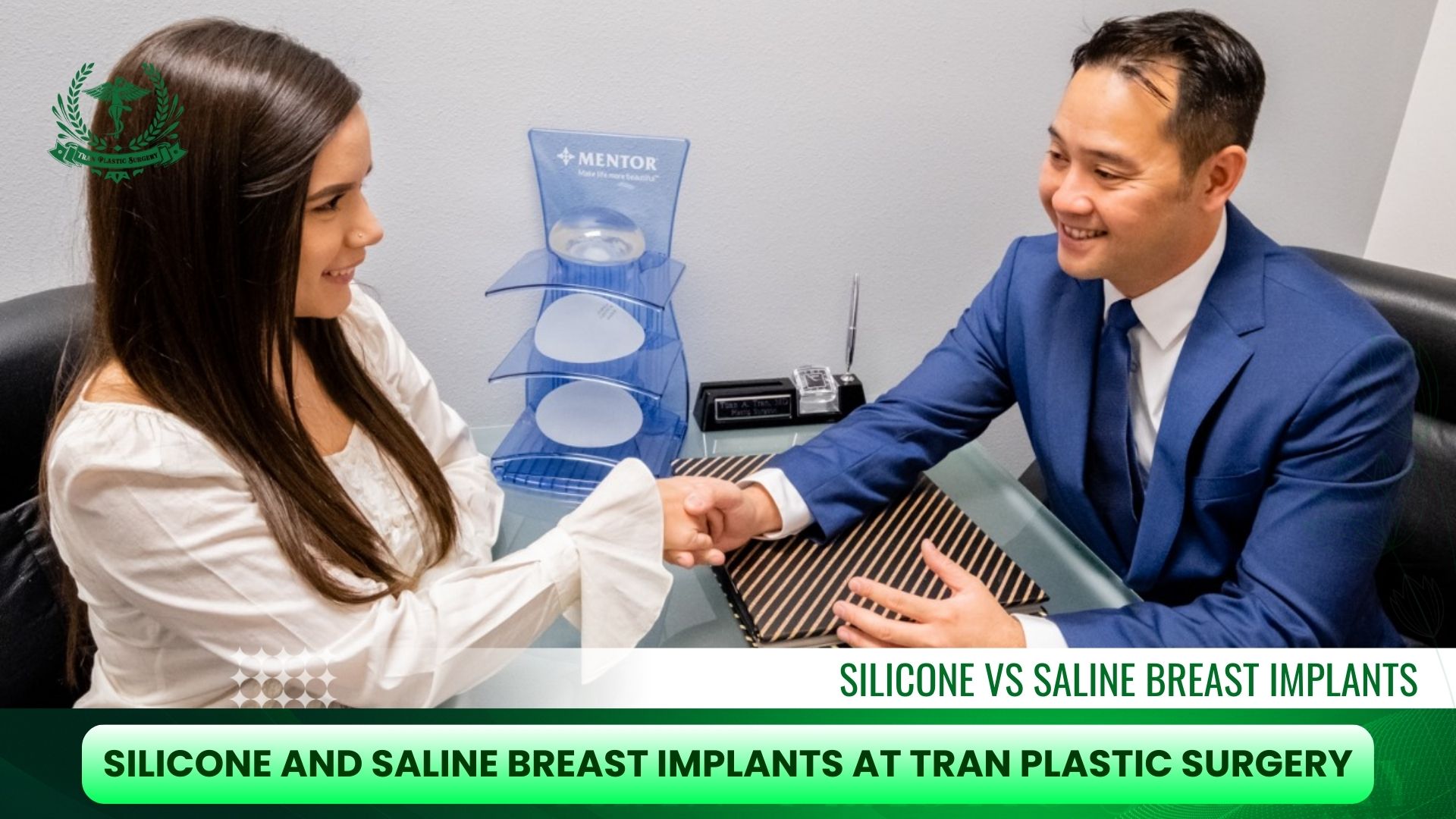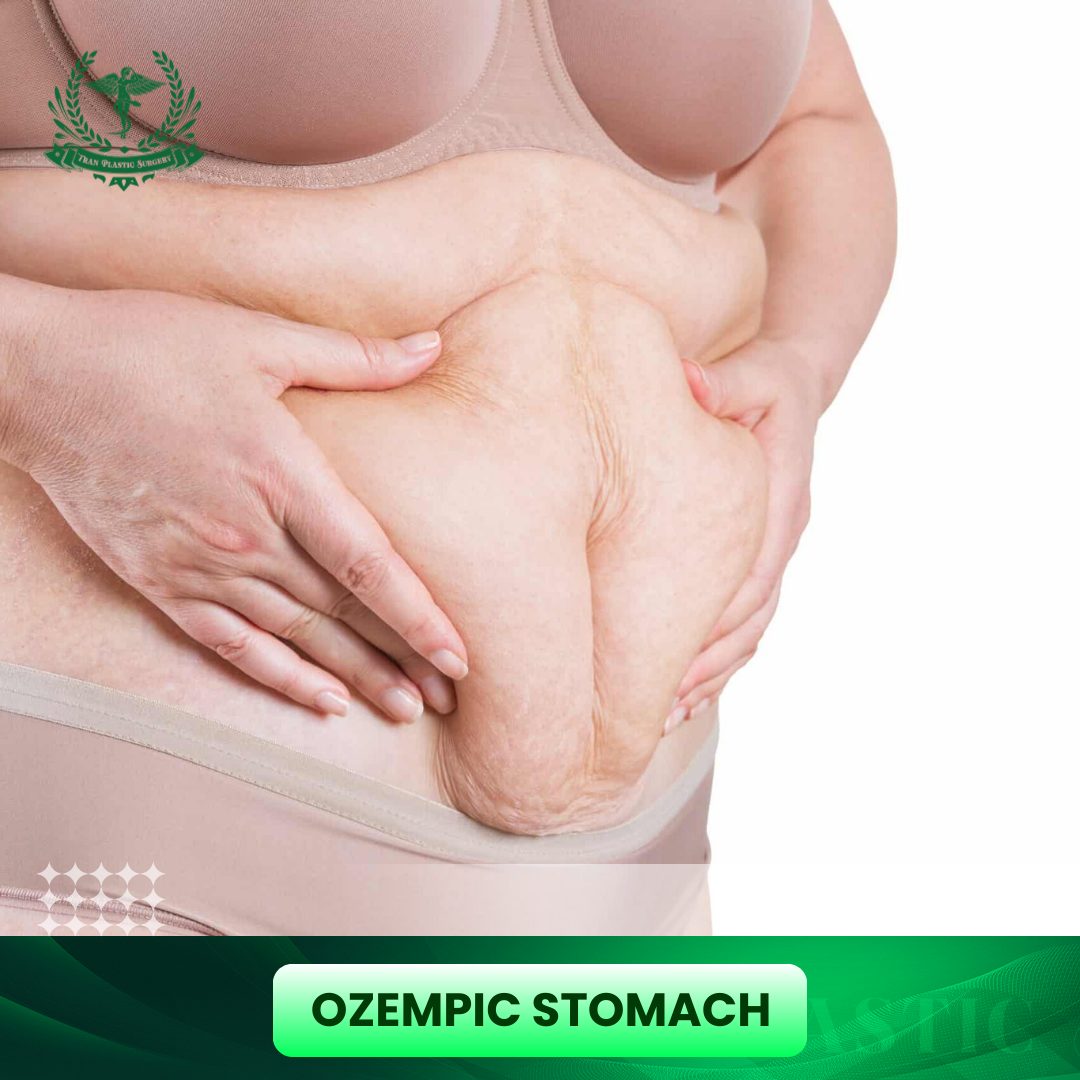Silicone vs Saline Breast Implants – which one is right for you? Are you trying to understand the real difference between silicone and saline implants before choosing the best type of breast implants for your body and goals? This guide breaks down the pros and cons of each option, giving you the clarity you need to make an informed decision with your surgeon.
Table of Contents
ToggleWhat Are Silicone and Saline Implants?
Before diving into the silicone vs saline breast implants pros and cons, it’s important to understand the difference between silicone and saline implants. Both implants share a similar silicone shell, but what’s inside sets them apart:
- Saline implants are filled with sterile saltwater after placement. They allow for smaller incisions and adjustable volume during surgery. If a rupture occurs, the breast deflates quickly and the saline is safely absorbed by the body.
- Silicone implants come pre-filled with a cohesive silicone gel that feels soft and natural. Modern options, like the “gummy bear” implant, hold their shape even if the shell breaks, making them popular for their realistic look and feel.

Silicone vs Saline Breast Implants Pros and Cons
When it comes to silicone vs saline breast implants pros and cons, there are important factors every patient should understand before choosing. Both implant types are safe and widely used in breast augmentation implant options, but they deliver different results in terms of feel, appearance, safety, and cost.
1. Saline Implants – Pros & Cons
*Pros of Saline Implants:
- Cost-effective: Saline implants are usually less expensive compared to silicone implants, making them a budget-friendly option for many patients considering breast augmentation implant options.
- Smaller incision, smaller scar: Because saline implants are inserted empty and then filled with sterile saltwater once in place, the incision is often smaller, resulting in a less noticeable scar.
- Easily detectable rupture: If a saline implant ruptures, the breast quickly deflates, and the body naturally absorbs the saline solution without harm. This makes ruptures obvious and easy to address.
- FDA approval at age 18: Saline implants are approved for women as young as 18, while silicone requires patients to be 22 or older.
*Cons of Saline Implants:
- Less natural feel: Saline implants tend to feel firmer and less like natural breast tissue compared to silicone.
- Higher risk of rippling or wrinkling: Especially in thin patients with little natural breast tissue, saline implants can sometimes create visible folds or ripples under the skin.
- Possible “sloshing” sensation: In some cases, patients report a water-like movement or sound, which can feel unnatural.

Overall, saline implants are a good choice for patients prioritizing cost, smaller scars, and peace of mind in case of rupture. However, they may not deliver the same natural look and feel as silicone implants.
2. Silicone Implants – Pros & Cons
*Pros of Silicone Implants:
- Natural look and feel: Silicone implants are filled with a cohesive gel designed to mimic the softness of natural breast tissue. This makes them the preferred option for patients who want the most realistic results.
- Less chance of rippling: The gel consistency allows silicone implants to maintain their smooth contour with fewer visible wrinkles, even in thin patients.
- Shape retention: Modern silicone implants, especially cohesive gel or “gummy bear” implants, hold their shape well and provide long-lasting, aesthetically pleasing results.
- Variety of options: Silicone implants are available in different shapes and consistencies, offering more flexibility to match different body types and cosmetic goals.
*Cons of Silicone Implants:
- More expensive: Silicone implants generally cost more than saline, reflecting the complexity of their design and materials.
- Larger incision required: Since they come pre-filled, silicone implants require a slightly larger incision, which may result in a bigger scar compared to saline.
- Silent rupture risk: A rupture may not be immediately visible or cause deflation. This “silent rupture” requires MRI scans to detect, which the FDA recommends every 2–3 years.
- FDA approval at age 22: Silicone implants are only approved for patients aged 22 and older, limiting access for younger women.
In short, silicone implants offer superior aesthetics and a more natural feel, but they come with higher costs and additional maintenance requirements.
When evaluating the difference between silicone and saline implants, it’s important to weigh these factors:
- Saline implants = affordability, smaller scars, and safety through obvious rupture detection.
- Silicone implants = natural look, softer feel, and better long-term shape but at a higher cost.

By understanding the silicone vs saline breast implants pros and cons, patients can make a more confident choice that matches their goals, anatomy, and budget.
More articles just for you:
Are Silicone Implants Better Than Saline? Key Differences Explained
For many patients, the big question is: are silicone implants better than saline? The truth is, neither option is universally “better.” Instead, the right choice depends on your body type, cosmetic goals, and budget. Below is a breakdown of the main factors that highlight the difference between silicone and saline implants.

1. Feel and Texture – Which Feels More Natural?
One of the most noticeable distinctions between the two is how they feel to the touch. Silicone implants are filled with cohesive gel that closely mimics natural breast tissue, giving them a softer and more realistic feel. In contrast, saline implants are filled with liquid saltwater, which can feel firmer and less natural. For women prioritizing a natural texture in their breast augmentation implant options, silicone implants are often the preferred choice.
2. Appearance and Aesthetics – Rippling and Shape
When it comes to looks, silicone implants tend to provide a smoother contour and hold their shape more consistently over time. They are less likely to show rippling or wrinkling, even in women with less natural breast tissue. On the other hand, saline implants are more prone to visible rippling, especially in thin patients. If a seamless, natural appearance is your top priority, silicone generally delivers better results.
3. Safety and Rupture Concerns
Both implant types are FDA-approved and safe, but they behave differently if a rupture occurs.
- Saline implants deflate almost immediately, making a rupture obvious. The saline is safely absorbed by the body, but it does mean replacement surgery is needed quickly.
- Silicone implants can experience a “silent rupture,” where the gel remains inside the implant shell or scar tissue. Because this may not be noticeable right away, the FDA recommends MRI screenings every 2–3 years to ensure implant integrity.
While both are considered safe, some patients prefer the peace of mind of saline ruptures being easily detectable, while others value the durability and natural feel of silicone.
4. Surgery, Incisions, and Scarring
Another key factor in the silicone vs saline implants decision is the surgical process. Saline implants are inserted empty and then filled with saline solution, which allows surgeons to use smaller incisions and leave behind smaller scars. In contrast, silicone implants come pre-filled, requiring larger incisions for placement. For patients concerned about minimizing visible scarring, saline may be more appealing.
5. Cost and Accessibility
Saline implants are generally more affordable, making them a popular option for women who want breast augmentation with a lower upfront cost. Silicone implants, while more expensive, are often considered worth the investment because of their superior look and feel. It’s also worth noting that saline implants are approved for women 18 and older, while silicone implants are only available for women 22 and older.
In short, the choice between silicone and saline depends on your priorities. If you want the most natural feel and appearance, silicone implants often win. But if you value smaller scars, easier rupture detection, and lower cost, saline may be the better fit.
Make an appointment with Dr. Tuan Tran now by calling Hotline (714) 839-8000 or E-mail consulttranplastic@gmail.com
What Is the Best Type of Breast Implants?
So, what is the best type of breast implants? The answer isn’t the same for everyone. Both silicone vs saline implants offer unique benefits, and the right choice depends on your personal goals, body type, lifestyle, and budget.
- If you want the most natural look and feel, silicone implants are often recommended.
- If you prefer a more affordable option with smaller scars and easier rupture detection, saline implants may be the better fit.
Ultimately, there is no single “best” choice. The real key is finding the option that best aligns with your anatomy and expectations. That’s why it’s essential to work with a board-certified plastic surgeon who can guide you through your breast augmentation implant options and recommend the safest, most effective path forward.
At Tran Plastic Surgery, we specialize in helping patients understand the difference between silicone and saline implants, weighing the pros and cons, and tailoring recommendations to your unique needs. If you’re considering breast augmentation, schedule a consultation today and take the first step toward the confident look you’ve always wanted.
Silicone and Saline Breast Implants at Tran Plastic Surgery
At Tran Plastic Surgery, we know that choosing between silicone vs saline breast implants is one of the most important steps in your breast augmentation journey. With so many breast augmentation implant options available today, it can feel overwhelming to decide which implant type best matches your body, lifestyle, and cosmetic goals. That’s why our clinic provides personalized consultations to guide you through every detail of the difference between silicone and saline breast implants.

Whether you’re asking yourself “Are silicone implants better than saline?” or searching for the best type of breast implants, Tran Plastic Surgery is here to help you make the right decision. By combining advanced surgical techniques, artistic vision, and patient-centered care, we ensure that your breast augmentation journey is smooth, informed, and rewarding.
Ready to explore your options? Schedule a private consultation at Tran Plastic Surgery today and take the first step toward the confidence and natural beauty you deserve.
FAQs: Common Questions About Silicone vs Saline Breast Implants
1. How long do breast implants last?
Most breast implants last 10 to 20 years, but they are not permanent. Factors such as rupture, capsular contracture, or personal preference may lead to earlier replacement. Regular follow-ups with your surgeon are recommended.
2. What is a “gummy bear” implant?
This is a type of cohesive silicone gel implant that maintains its shape even if the shell is compromised. Gummy bear implants are considered one of the best breast augmentation implant options for patients who want a stable, natural look.
3. Can breast implants cause cancer or other health risks?
Breast implants are FDA-approved and safe for most women. However, there is a rare condition called Breast Implant-Associated Anaplastic Large Cell Lymphoma (BIA-ALCL). Your surgeon can explain this risk and how it is monitored.
4. What is the recovery time for breast augmentation?
Light activities can usually be resumed within a week, but complete recovery may take 4–6 weeks. Avoid heavy lifting and follow your surgeon’s aftercare instructions for the best healing process.
5. Are silicone implants better than saline for safety?
Both are safe but behave differently in case of rupture. Saline ruptures are immediately noticeable and harmless, while silicone ruptures can be silent and require MRI scans to detect.
6. Which implant looks more natural - silicone or saline?
Silicone implants typically look and feel more natural because of the cohesive gel. Saline implants may appear less natural, especially in thin patients, as rippling can be more visible.
8. Can I switch from saline to silicone implants later?
Yes. Many patients choose to replace their saline implants with silicone later for a softer, more natural look. This is usually done during a revision surgery with a board-certified plastic surgeon.
9. What age can I get breast implants?
The FDA approves saline implants for women 18 and older, while silicone implants are approved for women 22 and older. These guidelines ensure safety and maturity of breast development.
10. Do breast implants affect mammograms?
Breast implants can make mammograms slightly more difficult to interpret, but experienced radiologists use special techniques to get accurate results. Be sure to inform your imaging center if you have implants.




